
33rd BATTALION AIF
Corporal: 1432 William John FINNEY. M.M.
Born: 5th December 1888. Little Plain via Inverell, New South Wales, Australia. Birth Cert:24775/1889.
Married: 4th May 1920. Scone New South Wales, Australia.
Wife: Annie Marjorie Doris Finney. nee: Petersen. (1895-1969)
Died: 27th November 1993. Inverell, New South Wales, Australia.
Father: Albert Finney. (18..-1901) Died at Inverell, N.S.W. Death Cert:9673/1901.
Mother: Ada Australia "Amelia" Finney. nee: Hobday. (18..-1936) Died at Inverell, N.S.W. Death Cert:7658/1936.
At the railway station the train had been decorated with Kurrajong leaves and flags for the occasion. A special train had been arranged to take them to the Narrabri Camp. Along the way the train stopped overnight at Warialda and Moree where further rallies were held and more recruits joined the Kurrajongs.
(Inverell Rembers 1916)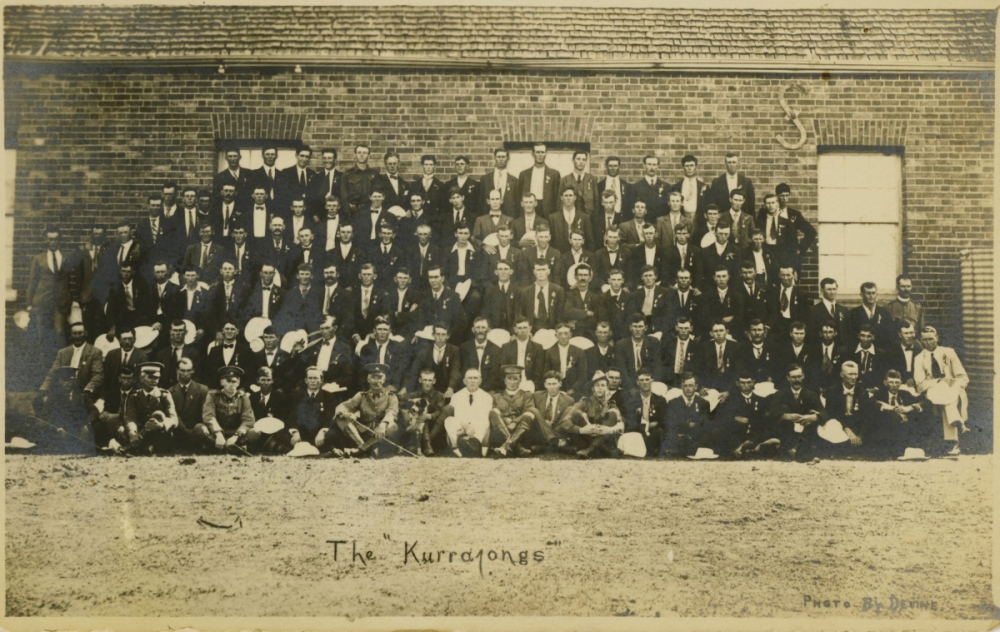
114 Men known as the Kurrajong's lined up against the Drill Hall in Inverell prior to marching to the railway station on the 12th of January 1916. The men all wore a white panama hat and were issued a pair of hand knitted sox and the Inverell Recruitment Medal.
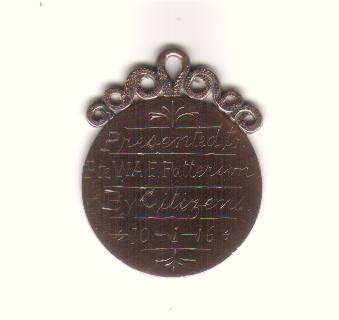
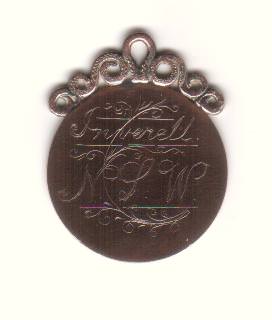
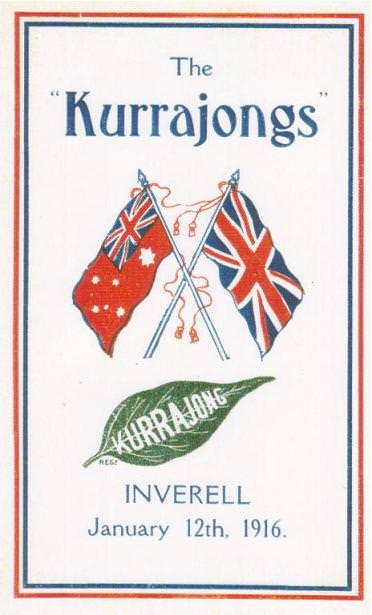
8th August 1918.
The approach was made in two stages. The 33rd Battalion moved from VIEW SECTOR on the night of August 6th/7th to AUBIGNY and rested there for 24 hours. On the night of August 7th/8th the Battalion passed the starting point at C.3.C.70.20 at 10.20pm. "A" track was used. The marking of the route was not sufficient, consequently it was parqueted by 30 men, including the band, under an officer. The march was made without incident or interruptions and we suffered no casualties. the head of the column reached the jumping-off line at 1.10 am. The march discipline throughout was excellent.
"A" track was laid to our left flank, consequently a tape line was laid to the centre of the Battalion front. "A" and "B" Company's wheeled in single file to the right, and "C" and "D" Company's to the left. As shown in the attached map, the jumping line was in rear of our outpost line in places. There was plenty of room in the front line (BARRABOOL TRENCH) for the whole Battalion to be under cover. The original plan was to remain in this trench until zero minus 5 minutes. But the situation was so quiet that the Companies were able to take up their dispositions in their ordered formation, and so rest in the open.
This assembly was completed at 2.10 am. We had no casualties before zero hour. Lieutenant: 129 Walter Gilligan MASON. (A Company Scout Officer) had charge of laying the tapes and did this work very well. Six direction tapes each 100 yards long were laid, one on each flank of the Battalion and one in the centre of each platoon front. These proved of the greatest value owing to the fog. The 33rd Battalion Scouts relieved those of the 38th Battalion who were holding the sector at 10.00 pm. At 10.30 they encountered an enemy post at P.21.B.30.20; the enemy threw bombs and wounded five of our men. Ten minutes later the 38th Battalion had an Officers patrol in NO MAN'S LAND but no further trace of the enemy could be found.
The Assault at about 4.00 am, as a dense fog arose, so dense was it that it was impossible to see more than 10 feet ahead. The whole artillery opened fire with great precision, and the barrage was very accurate. The fog made it extremely difficult to keep direction and to maintain formation, consequently the advance resolved itself into small parties moving on their own initiative. Only the first of the special ACCROCHE WOOD Signals could be seen, the smoke accentuated the fog. Even the barrage could not be seen.
ACCROCHE WOOD was strongly garrisoned and contained an abnormally large number of machine guns, but the garrison offered no resistance and readily surrendered. The attack was quite unexpected, and the fog was certainly to our advantage. The enemy remained in his dugouts during the bombardment. He gave us very little occasion to use bombs as he readily came forward with his hands extended above his head, one would almost think this was one of his favourite P.T. exercises.
Most of the guns in LONE VALLEY got away they were aided by the fog and all that we could do was to open fire on them. We captured only three guns in this valley, three 4.2s south of RAT WOOD. HAZEL WOOD was captured without difficulty. The GREEN LINE was reached according to schedule and consolidation immediately commenced. On the left protective barrage at 8.20 am when the 4th Division passed through us to the second phase of the attack, this line was re-sited and ran from Q.25.B.40.80; to Q.20.A.40.10; We were in touch with the 35th Battalion on our left and the 18th Battalion who did not occupy their allotted front. The sector was organised into four Company Sub Sectors each with two Platoons in the front line and two in support. Battalion Headquarters were established at P.23.D.50.50; The re-organisation and refitting of the Battalion was carried out without delay.
The barrage was excellent, not a single short being reported. All ranks are most enthusiastic in their appreciation of the exceedingly fine work of our artillery. The movement forward of our batteries to assist in the second phase was splendidly carried out. Special mention too must be made to the good work of the 10th and 9th A.L.T.M. Batteries and the 5th and 6th A.M.T.M. Batteries. One expected to see many more enemy dead in the area, not more than 50 were seen. The enemy's resorting to deep dugouts and his good form in athletics accounted for this.
The enemy's artillery was surprisingly feeble. At no time was his fire effective. When he eventually did learn something of the situation he lost no time in beating a hasty retreat. In the early stages the tanks were no assistance, being behind our troops most of the time. When the visibility allowed the tanks to go forward they did excellent work. Only one tank reached the green line with our troops. When they did get in front they were handled to great advantage. Their effect on the enemy's moral greatly delighted our men. The supply tank formed our dump 300 yards in rear of our line. The value of getting such large supplies forward so early and saving of infantry carrying parties cannot be overestimated.
The work of our machine guns could only be heard. Their fire appeared to be well concentrated and un doughtily must have been accurate. Only one means of communication was possible, namely runners, and they had very great difficulty in finding their way; On the fog lifting viability and telephonic communication was established. The liaison patrols with the 5th Brigade on our right did not function.
Seven officers, 500 other ranks were captured. This is a conservative estimate and much below the totals submitted by the Companies. 457 can be definitely accounted for these having passed through Battalion Headquarters. 4 x 4.2 Howitzers and 6 x 77 MM Guns. These were captured by Lieutenant: 3072 Frank Albert HUTCHINGS M.C. and party and were marked and tagged. This party worked in the Second Division's area and captured these guns just north of LA MOTTE-en-SANTARRE. On returning in the afternoon to ascertain the number they found, that the guns had been taken away. The remaining there were captured at LENA WOOD. 30 machine guns. Of these 16 have been sent to the HAMELET dump. We have not the numbers of the remaining 14, but the total of 30 is a low estimate. a number of our guns were removed by other units which did not take part in the attack. 1 x Anti-Tank gun. 10 light Minenwerfers, 2 medium minenwerfer, 1 horse, 2 typewriters, large quantity of shells, rifles, equipment, documents and war material.
Casualties 10 Killed in Action, 50 wounded.
(33rd Battalion Unit Diary)
On June 9th he was wounded while at the lines but he finished the task and after having the wound dressed he again went forward and re established communications. On one occasion when returning across No Man's Land he brought in a severely wounded signaller at a time when stretcher bearers were busily engaged. By his marked fearlessness and his eager and cheerful fulfilment of duty he set a splendid example to his Battalion. Honours Recommended. D.C.M.
21st August 1918.
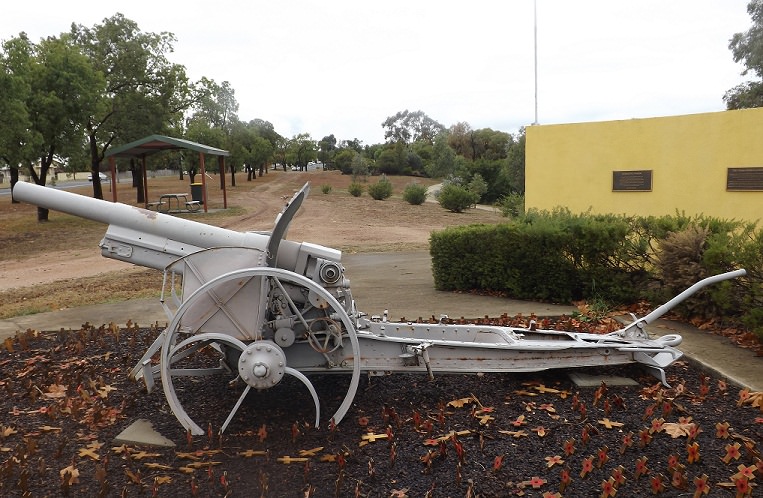
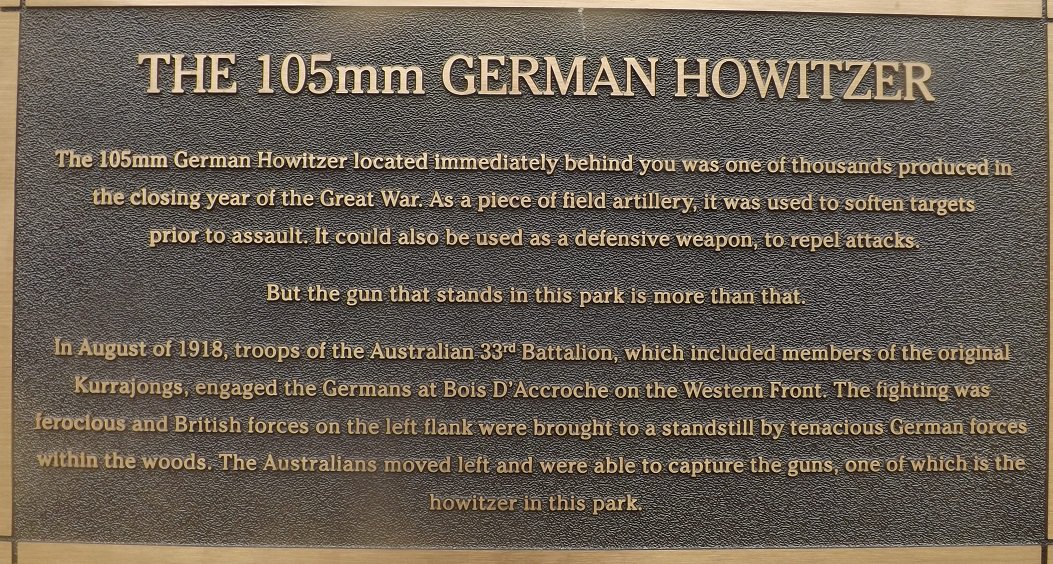
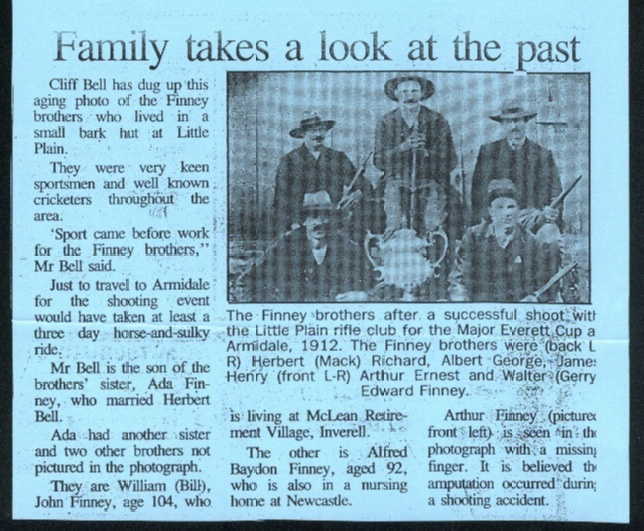
William served during World War 2 service number: N102325 and died 8 days short of his 105th Birthday on the 27th November 1993.
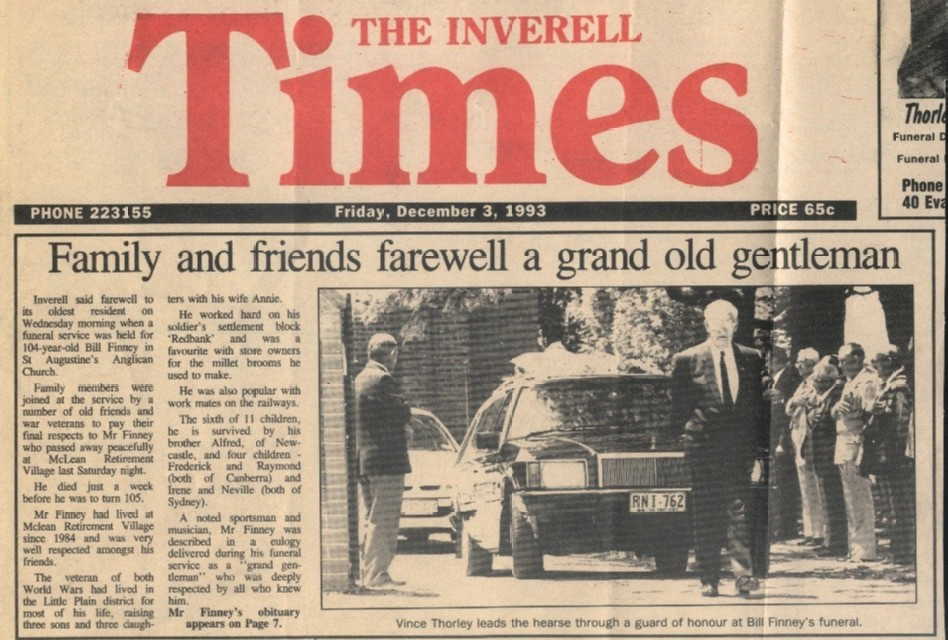
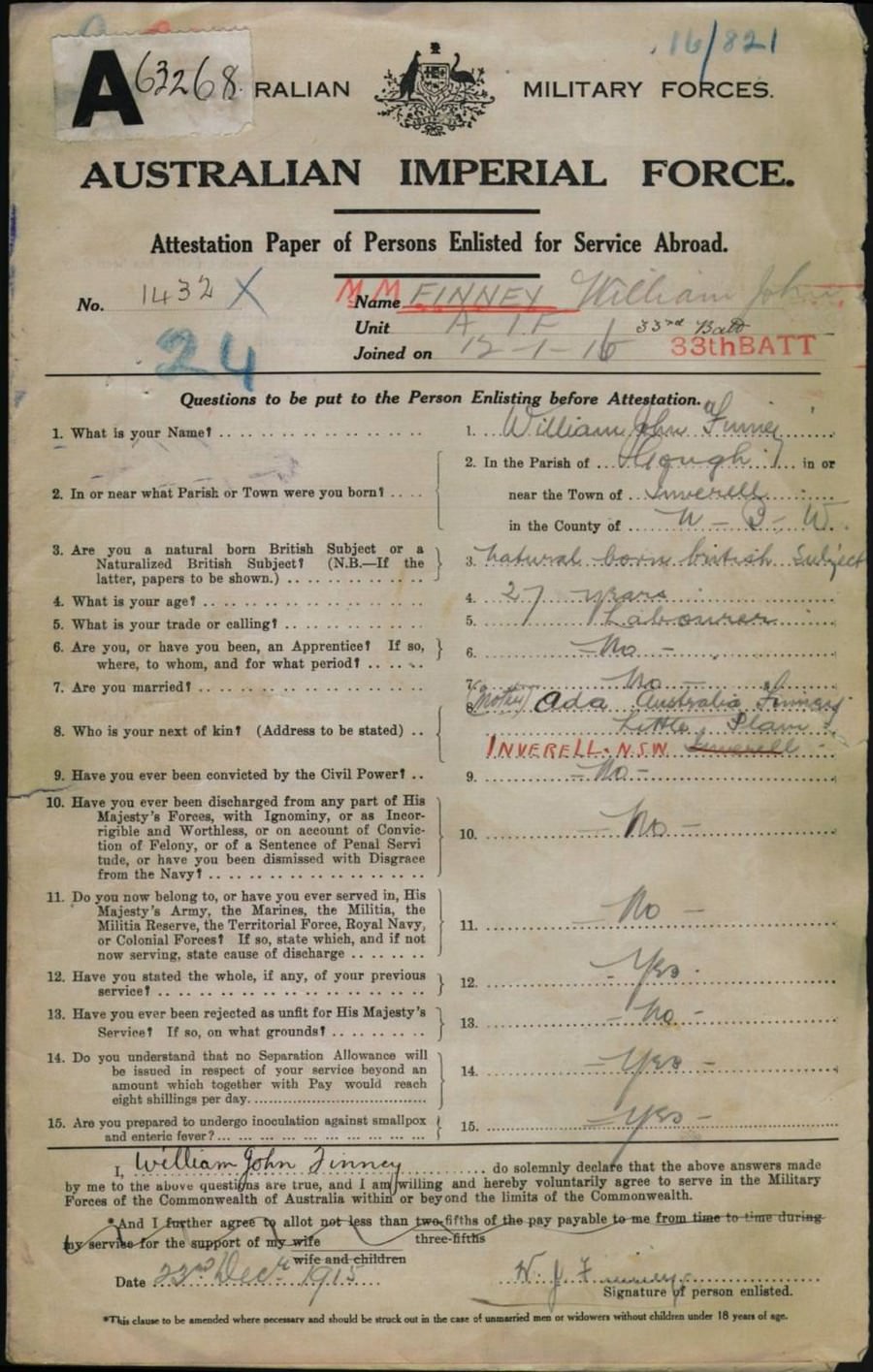

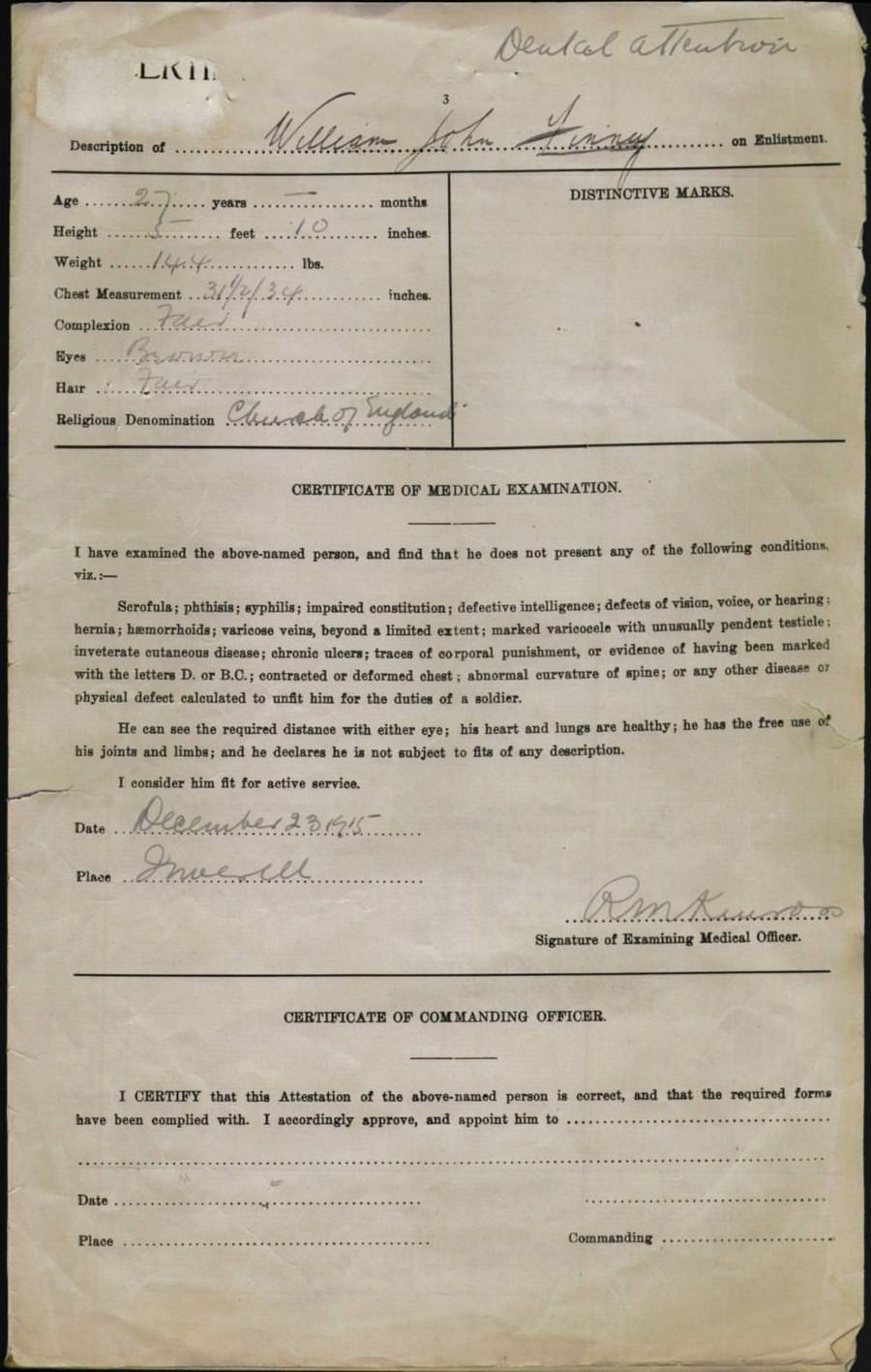
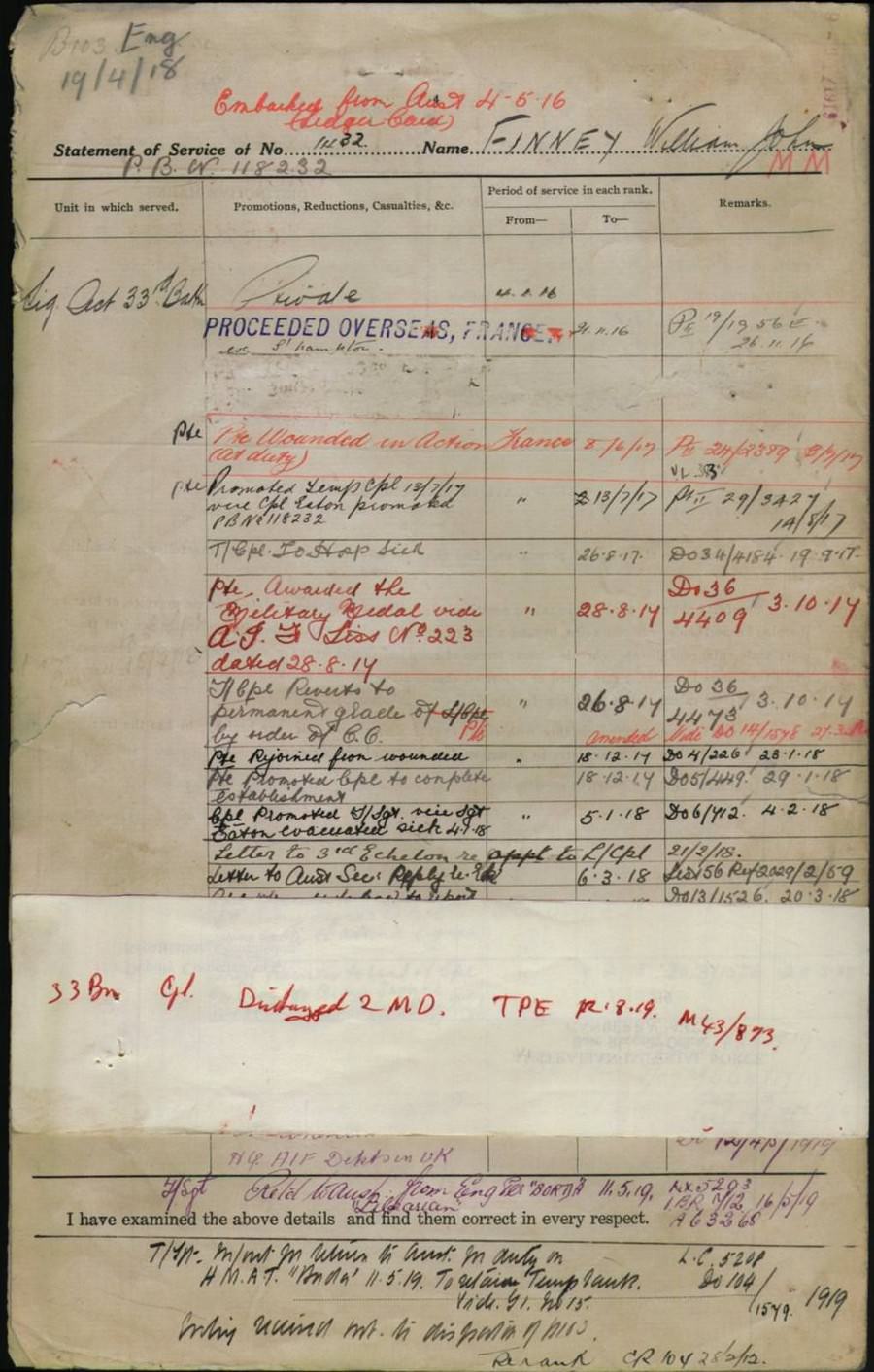

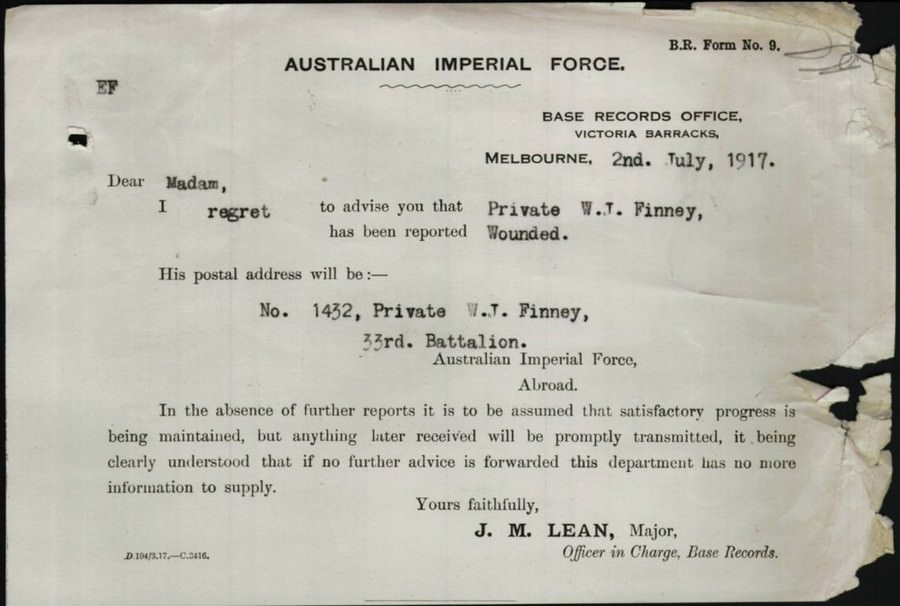
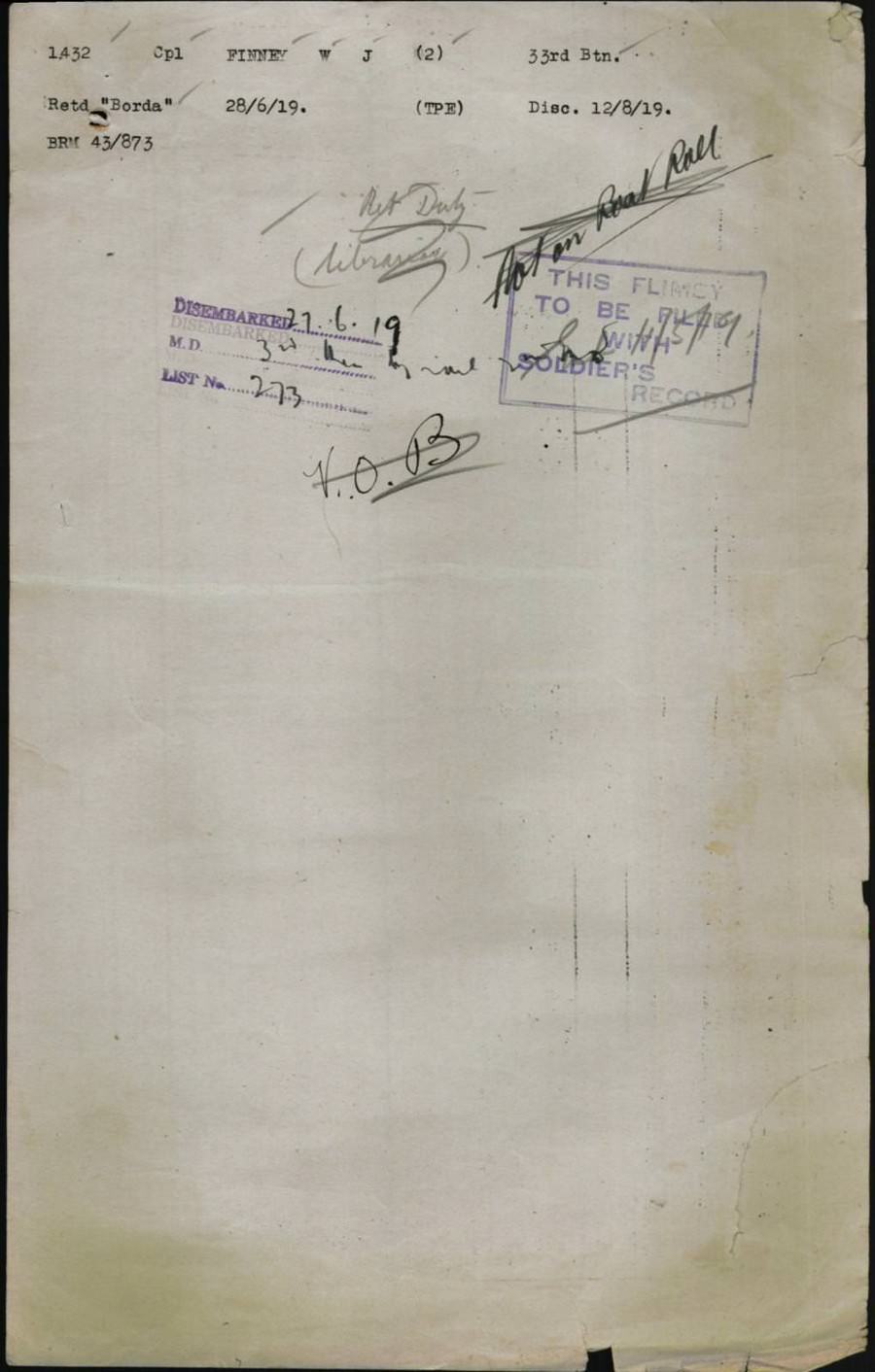

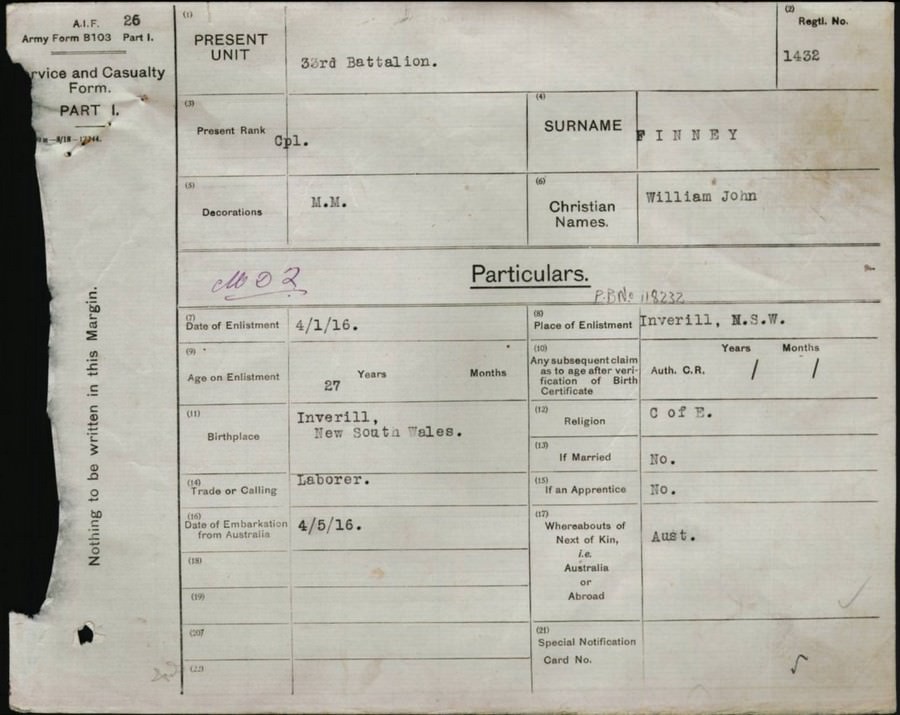
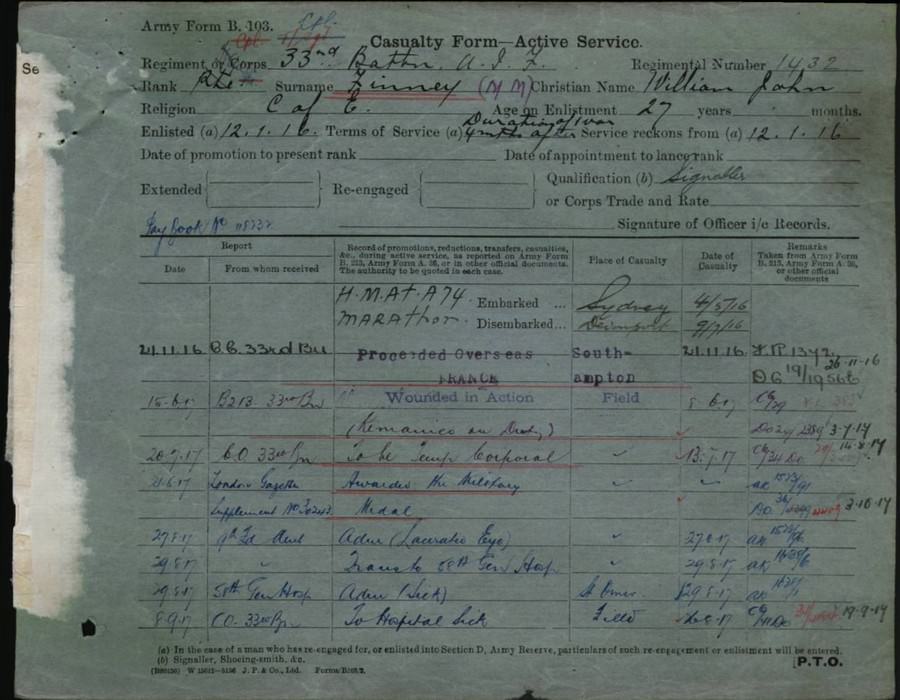
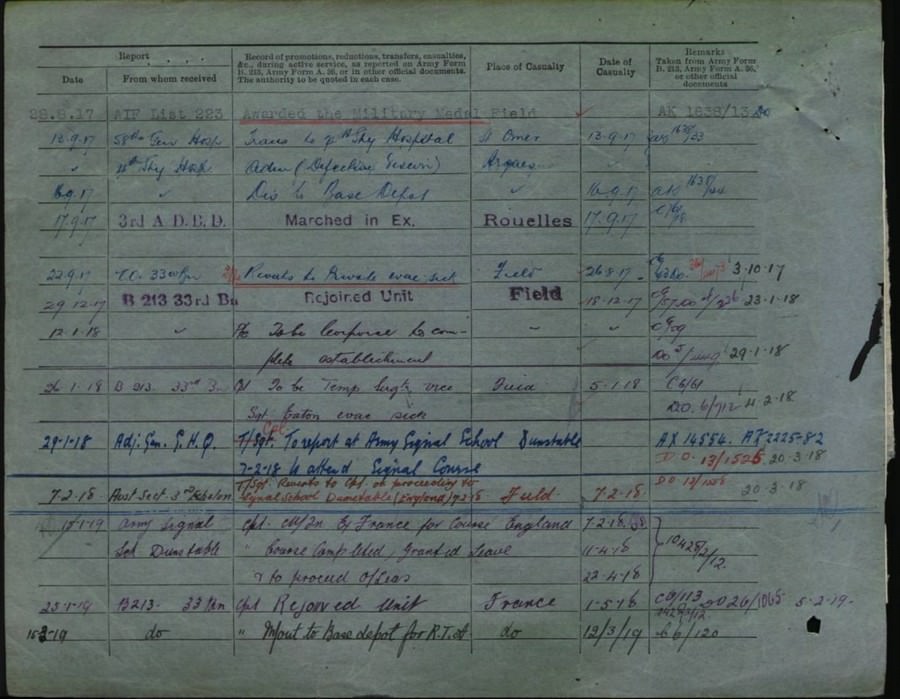
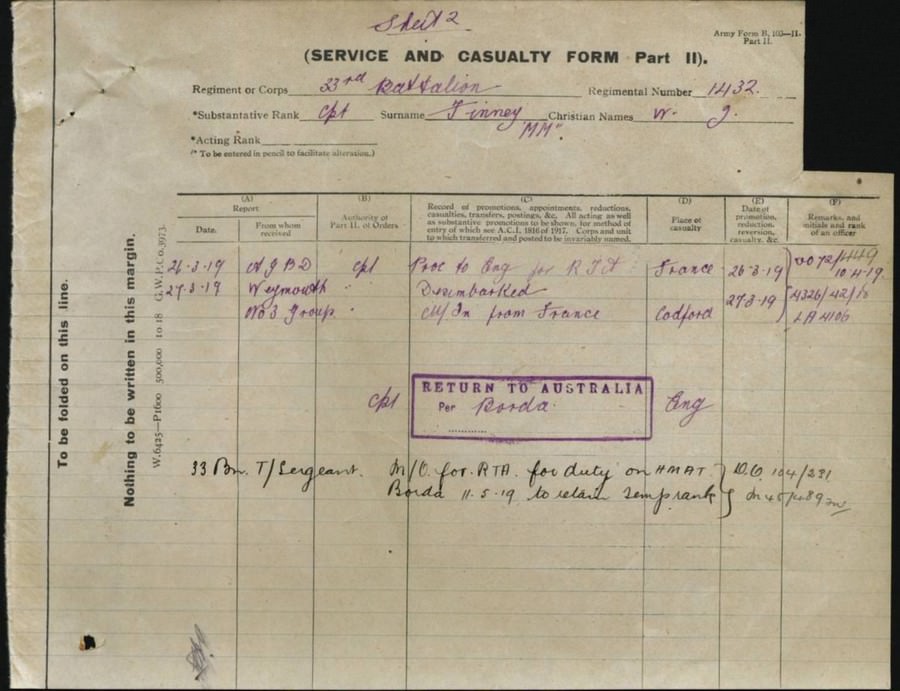
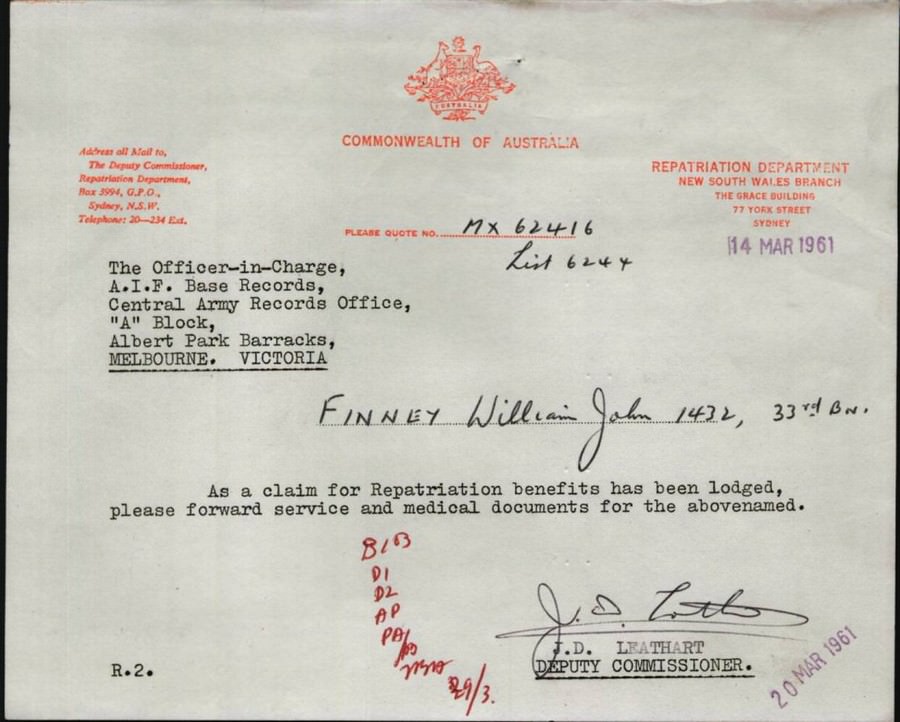

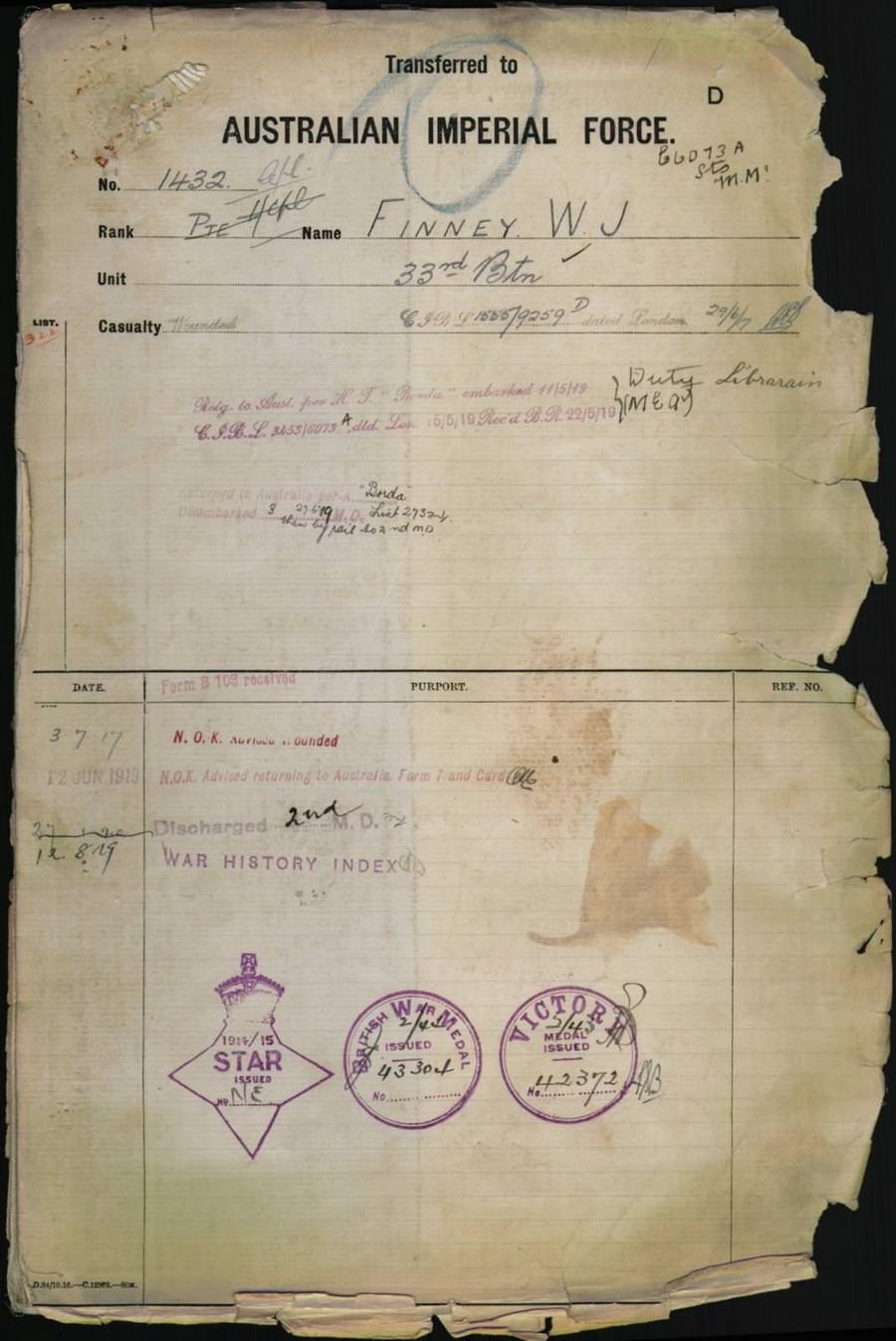
Under Construction: 14/12/2014-30/05/2023.




















